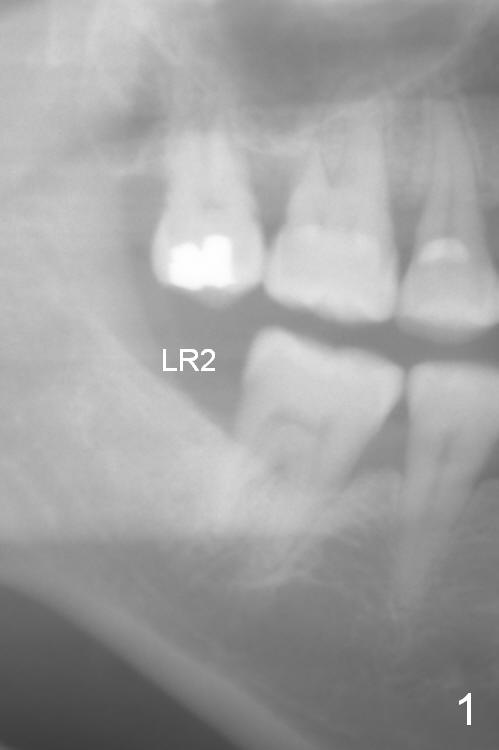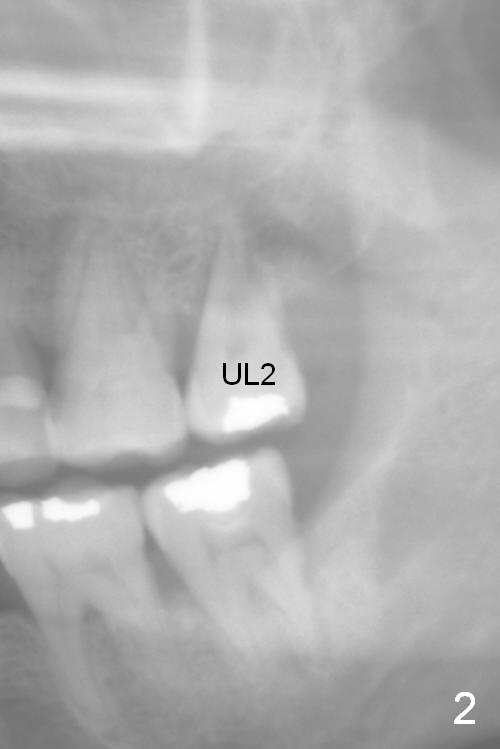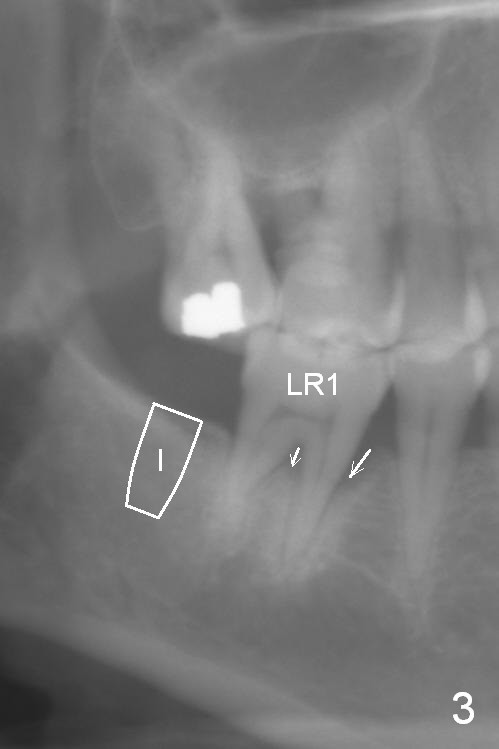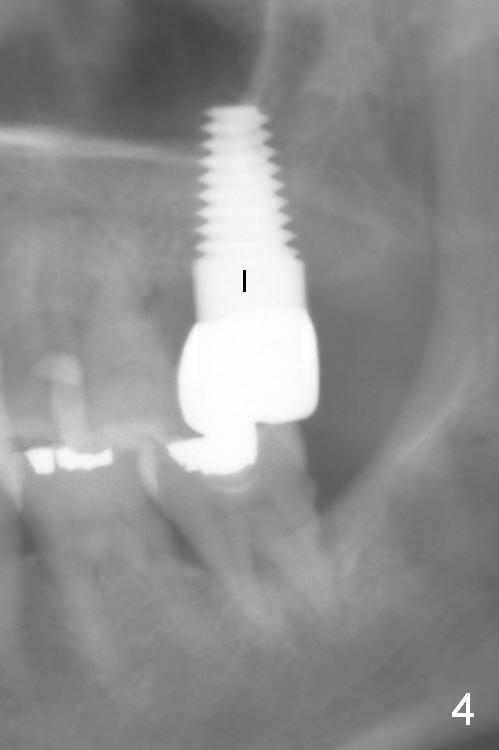



 |
 |
 |
 |
Devastating Effect of a Missing Tooth
When Mrs. Yin became our patient 7 years ago, she had lost the lower right 2nd molar (Fig.1: LR2), while the upper left 2nd molar (UL2) was in bad shape. When the latter was not salvageable, it was extracted and immediately replaced by an implant (Fig.4 I). Mrs. Yin can chew so well with the implant that she wants to have another implant for the lower right missing tooth (Fig.3 I). Since the tooth has been missing for so long, the bone has shrunk a lot. The implant (called delayed, as compared to immediate one mentioned above) will be short and skinny (Fig.3 I). When the tooth is just extracted, the socket is big and strong. It can hold a much bigger and longer implant (Fig.4 I).
In the last 7 years, the lower right 1st molar (Fig.3 LR1) has lost bone (arrows, as compared to Fig.1), because it has to overwork to compensate for the missing neighbor. If it keeps working hard without implants to replace missing teeth, it may be gone soon. In brief, a missing tooth may have devastating effect on our chewing system.
Return to Implant
Xin Wei, DDS, PhD, MS 1st edition 05/23/2015, last revision 05/23/2015